In the Victorian and Edwardian era, all women wore camisoles over her corsets so that the corset boning wouldn’t show through the often sheer dress materials. So, camisoles – also known as corset covers – were essential garments back then!
‘The corset cover, as its name implies, is primarily worn to protect the corset; it also serves to improve the appearance of the outside waist.’ (School Sewing Based On Home Problems, 1916)
My Edwardian camisole is a plain white cotton camisole with lace yoke – similar camisoles were very popular in the Edwardian era.
Edwardian Lace Camisole Inspirations
My Edwardian lace camisole is inspired by these 1907 lace corset covers in Eaton’s Spring and Summer Catalogue:
‘Cotton, yoke in front of wide lace; lace, beading, ribbon on neck and arms, draw string at waist’ (Eaton’s Spring and Summer Catalogue, 1907).
And here’s another antique Edwardian lace camisole which is very similar to mine. And you’ll find even more of my inspirations on my pinterest board ‘1900s Lingerie’.
The Pattern
‘A commercial pattern may be used for this corset cover, or you may draft your own pattern’ (School Sewing Based On Home Problems, 1916).
As usual, I drafted my own pattern. But the pattern is based on this 1911 camisole pattern.
The Fabric
I used sheer white cotton batiste for my Edwardian lace camisole. Camisole fabrics should be thin and delicate so as not to add bulk at the waist.
The Lace Yoke
For the lace yoke, I used different white cotton bobbin lace and Mechlin lace and sewed them together by hand with overhand stitches.
Related: How To Make An Edwardian Lace Yoke
The lace yoke is ‘made by sewing together several rows of insertion’ (School Sewing Based On Home Problems, 1916).
I attached the lace yoke with a faux rolled hem – this Edwardian technique creates an almost invisible seam! If you want to learn how to attach or insert lace with this method, click on the link below – it’s the third method.
Related: How To Attach Lace The Edwardian Way (3 Different Methods)
Lace ‘may be set a scant one-eighth inch below the raw edge of the material and whipped to it. The edge has the appearance of being rolled.’ (Clothing For Women: Selection, Design, Construction, 1916)
The Closure
Edwardian camisoles were either closed with buttons or with snaps. My Edwardian lace camisole is closed with five snaps at the front. It also has a drawstring at the waist.
‘Fasten the corset cover together with snaps on the front hems and a hook and eye on the band […] or with buttons and buttonholes on the hems and also the band’ (School Sewing Based On Home Problems, 1916).
The Seams
My Edwardian lace camisole has no side seams and no shoulder seams. But I finished the seams on the peplum with felled seams.
‘The felled seam is used any place where a flat seam is desired. It is particularly desirable in under garments’ (School Sewing Based On Home Problems, 1916).
The Peplum
Edwardian camisoles either had a band or peplum at the waist: My corset cover has a peplum.
The corset cover ‘is cut after a pattern which makes but few gathers necessary in the band at the waist line; this is very desirable, as it gives plenty of fullness at the top without the bulging, clumsy appearance at the band. It is desirable to attach a peplum to keep the corset cover from slipping up and leaving a gap at the waist line’ (School Sewing Based On Home Problems, 1916).
The peplum was usually tucked into the petticoat for a smooth hip line. I’m only wearing it over the petticoat for the photos.
More Edwardian Lingerie


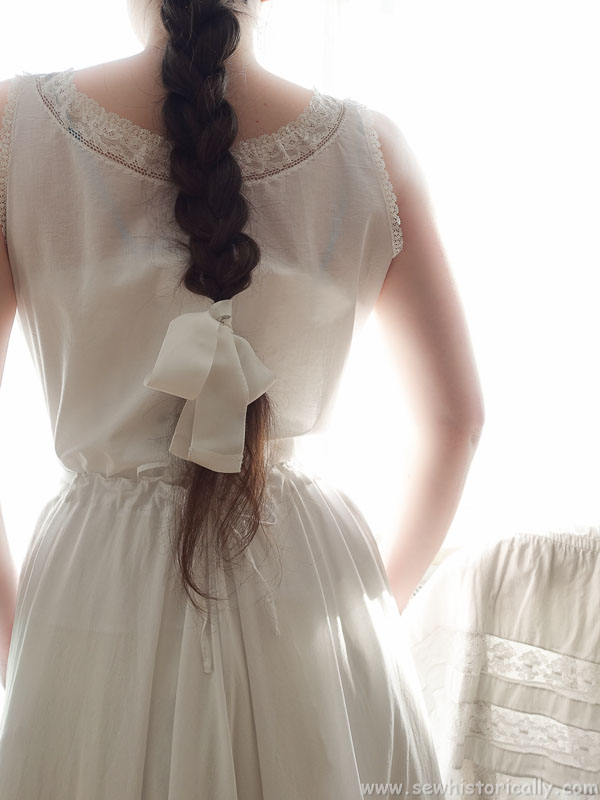
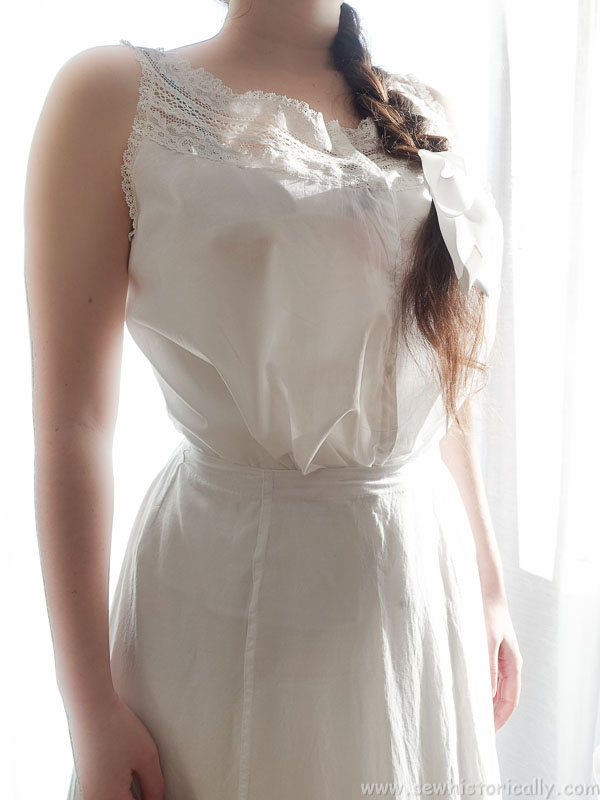

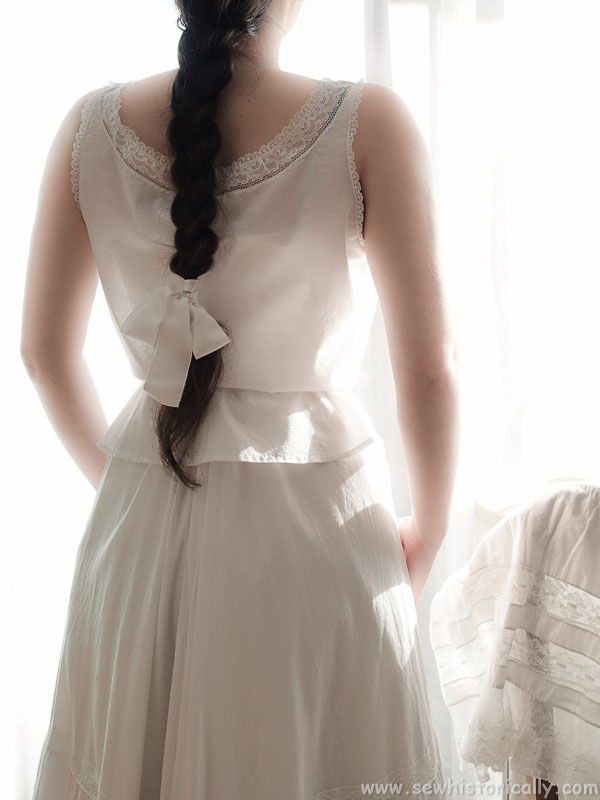
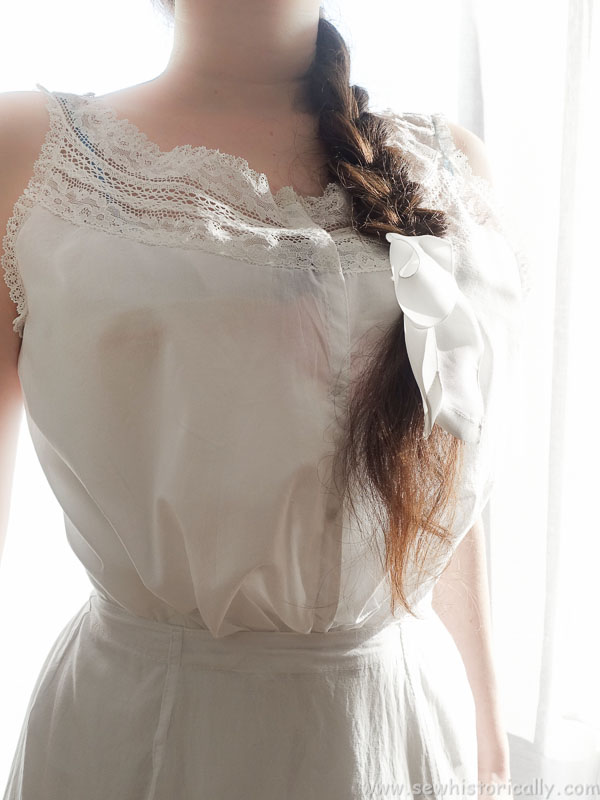
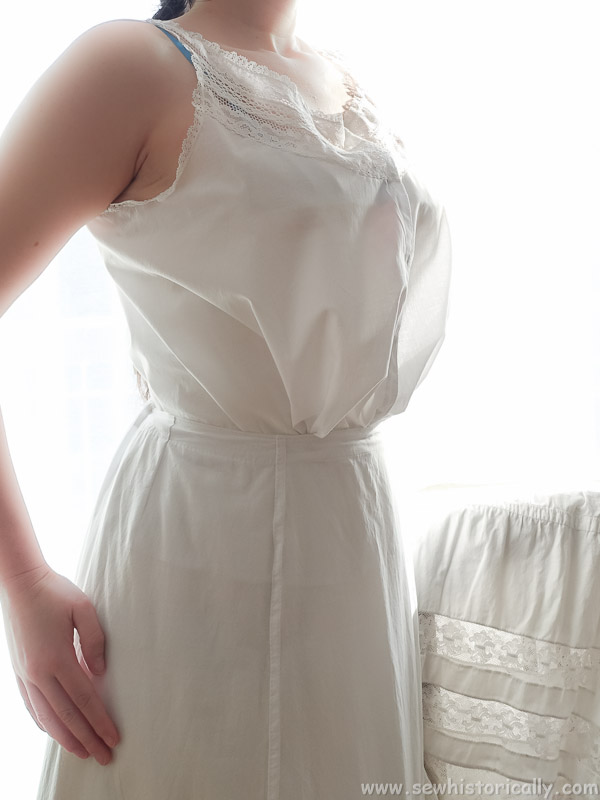
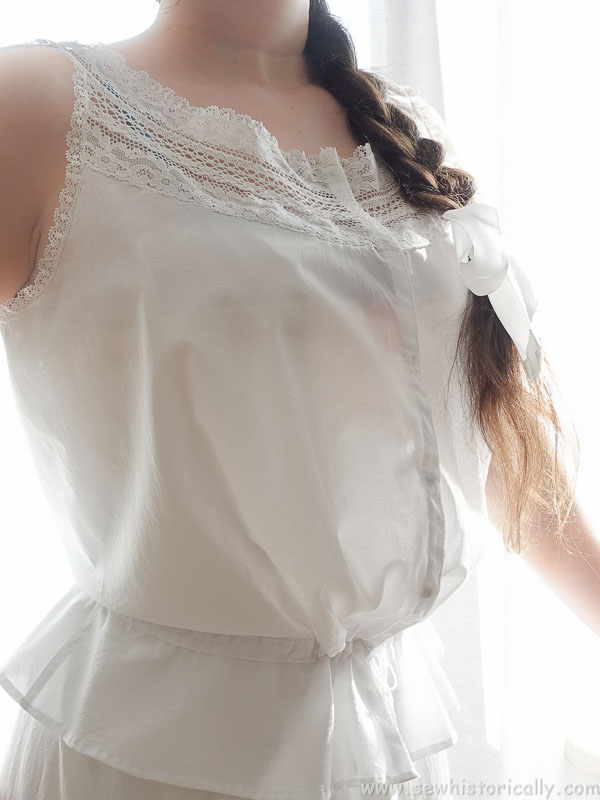

Very pretty!
Thank you! 😀